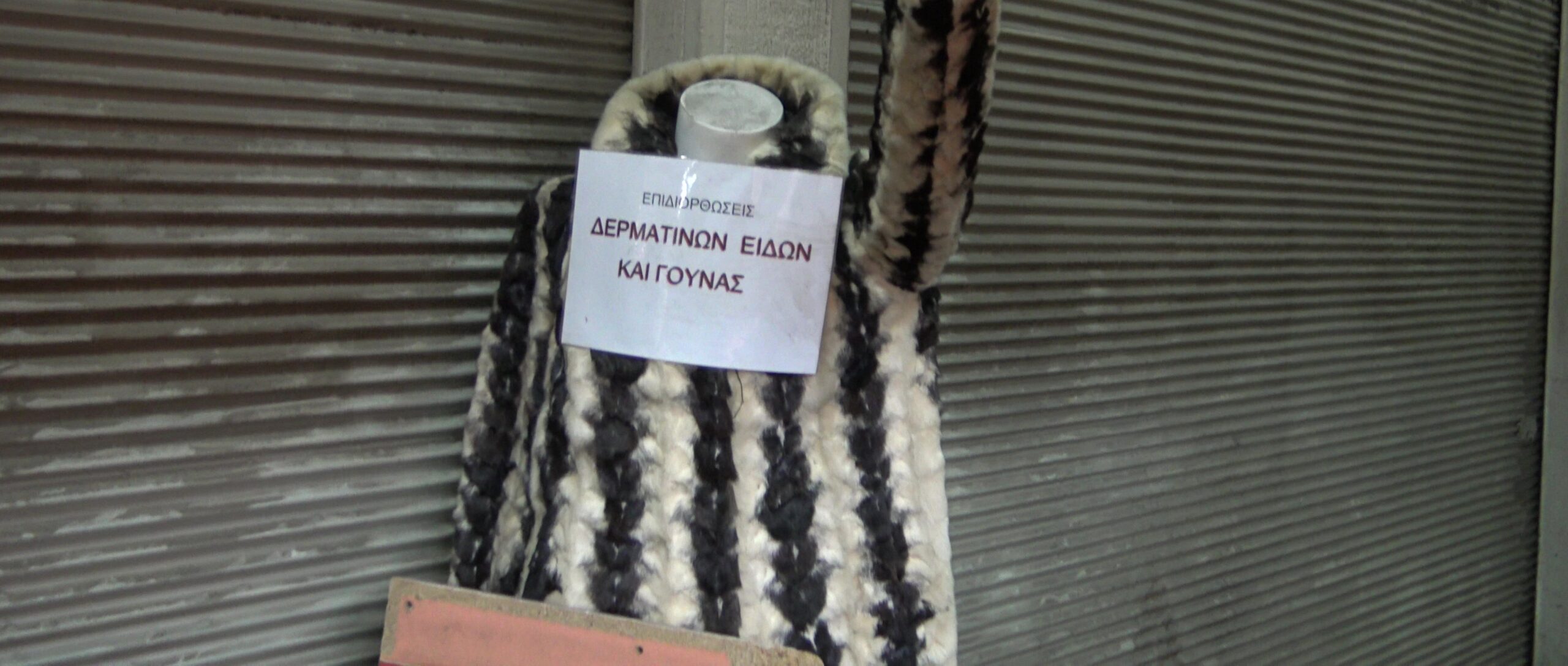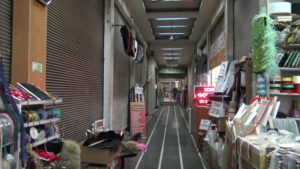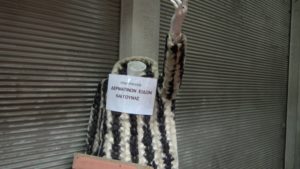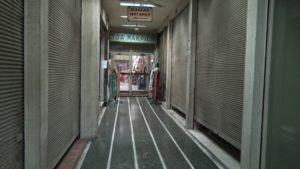The Karasso Arcade
Full Description
The Karasso Arcade is an iconic landmark of the modern labour and manufacturing history of Thessaloniki. It is an L-shaped arcade linking Venizelou Street and Ermou Street. More specifically, the part of the arcade that faces Venizelou Street is called Makridis Arcade, while the part entered from Venizelou Street is called Karasso Arcade. Originally built in 1923, it was demolished in 1959 and rebuilt in its current form.
The Karasso Arcade is also the entrance to a multi-storey apartment building, with stalls selling sewing and mending materials on the ground level, while the floors above the passage housed small contract manufacturers making garments as well as workshops for mending and finishing clothes and adding buttons and buttonholes. After the economic crisis of 2010, only the first floor of the building remained in operation, and in 2021 the space was vacated and will be converted to a hotel. The photographs were taken in January 2020, when the building was mostly defunct and just a few months before it was fully vacated. It is worth noting that despite the sale of the Karasso Arcade and the intended change in property use, the Makridis Arcade has retained its earlier commercial function.
The historical circumstance which led to the creation of the Arcade sheds light not only on the commercial processes and transactions behind the business of clothing manufacturing, which the Arcade housed for decades, but also on the cultural trends and major shifts that have shaped the commercial and financial systems of Thessaloniki. It appears that operating the building in question as an arcade, with the upper stories housing commercial shops and workshops, can be largely attributed to the preference shown by the city’s commercial interests towards the historic centre after the Great Fire of 1917. According to Karadimou-Gerolympou, due to the blaze destroying a large part of what today constitutes the historic centre of Thessaloniki, the area was designed for reconstruction from scratch. Following the approval of Hébrard’s urban plan for the reconstruction of Thessaloniki, the wider area around the Karasso Arcade was designed by Hébrard himself with a view to the reopening and sustainable commercial operation of small shops and workshops. Adding passages between buildings, open spaces, and squares would encourage foot traffic and the successful operation of small stores around marketplaces, like the ones located near Athonos Square or the Vlali market to the west of Aristotelous Square.
In addition to the shops and passages planned by Hébrard, an informal network of small shops and workshops gradually emerged and surrounded the centrally-planned marketplace on the western part of the city centre. The unusual passages running through this commercial store network were commonly called arcades. They were often outdoor passages which encouraged commercial activity, or indoor passages between apartment buildings and other building complexes. The Karasso-Makridis Arcade is a characteristic example of the latter.
Bibliography
Stella Karagianni and Sofia Passia, Passages of Thessaloniki // Near extinction, research thesis supervised by Professor Styliani Lefaki, School of Architecture, Faculty of Engineering, Aristotle University of Thessaloniki 2016.
Alexandra Karadimou-Yerolympos, The making of modern Thessaloniki, Stories, people, places, University Studio Press, Thessaloniki 2013.
Vasilis Kolonas, Thessaloniki 1912-2012: A Century of Architecture, University Studio Press, Thessaloniki 2012.
Alexandra Yerolympos, ‘Ancient typologies and modern plans. Market streets and passages in the contemporary Greek city’, paper read in the conference on Passages, Mimar Sinan School of Architecture, Istanbul 2012.



